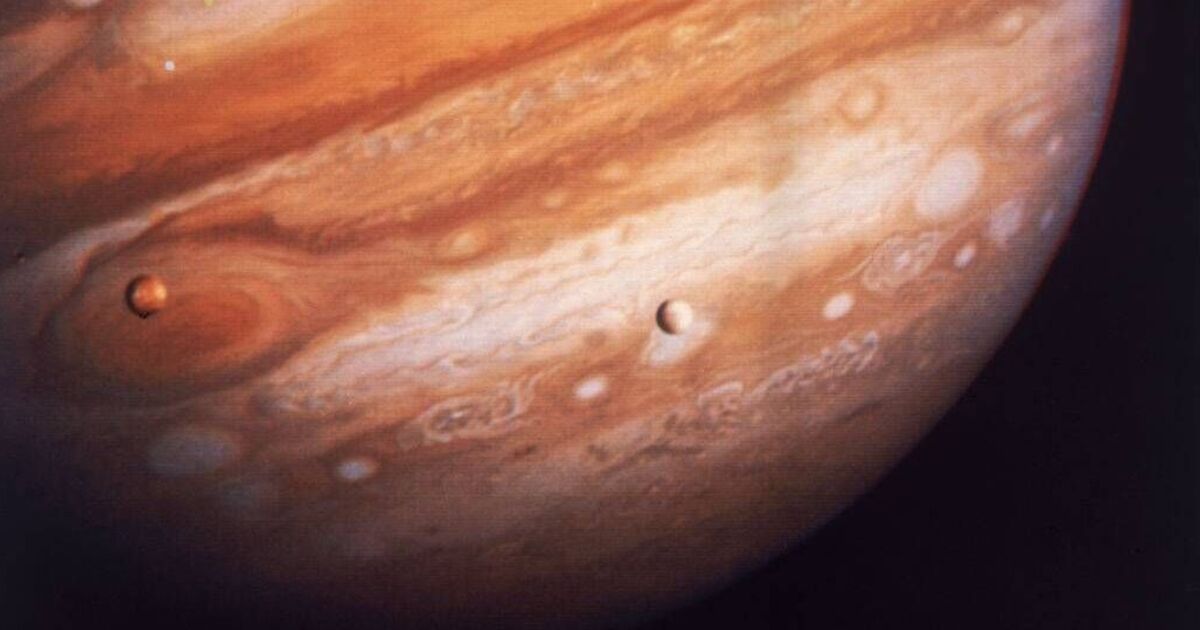Scientists have made a groundbreaking discovery that Jupiter, our Solar System’s largest planet, was once a behemoth capable of engulfing 2,000 Earths. As the oldest planet in our cosmic neighbourhood, Jupiter formed 4.6 billion years ago from the remnants of dust and gas left behind after the Sun’s birth.
Currently, Jupiter measures 11 times the width of our home planet, Earth – to put it into perspective, if Earth were the size of a grape, Jupiter would be roughly the size of a basketball, according to NASA. Moreover, its mass is a staggering 2.5 times that of all other planets combined. However, recent studies have unveiled that Jupiter was once significantly larger, boasting a more potent magnetic field.
Konstantin Batygin, professor of planetary science at Caltech, explained: “Our ultimate goal is to understand where we come from, and pinning down the early phases of planet formation is essential to solving the puzzle,” adding, “This brings us closer to understanding how not only Jupiter but the entire Solar System took shape.”, reports the Manchester Evening News.
Batygin, along with University of Michigan’s Fred Adams, delved into the mysteries of Jupiter’s smaller moons, Amalthea and Thebe, to grasp how they formed, evolved, and shrunk over time. With 95 known moons, Jupiter ranks second behind Saturn, which boasts an impressive 274.
These two tiny moons are the smallest and closest among Jupiter’s four prominent Galilean moons. Experts have unveiled astonishing findings about Jupiter’s past magnitude by studying the orbital dance of its moons, concluding that the gas giant was once 2 to 2.5 times larger than it is currently, a mere 3.8 million years after the formation of the first solid matter in our cosmic neighbourhood.
Astrophysicists delved into the moon movements to deduce the primal bulk of Jupiter, discerning that not only was the planet significantly more massive in its youth but also boasted a magnetic field about 50 times mightier than present-day levels.
“It felt remarkable that two relatively minor moons provided such clear evidence of Jupiter’s early state,” Batygin shared with Space.com, expressing his exhilaration at finding such lucid historical records beyond intricate nebular hypothesis models fraught with speculation.
Adams marvelled at the cosmic longevity of Jupiter’s genesis story: “It’s astonishing that even after 4.5 billion years, enough clues remain to let us reconstruct Jupiter’s physical state at the dawn of its existence.” The mystery of Jupiter’s contraction?
The research posits Jupiter’s formerly Herculean magnetic field as the culprit, having vacuumed up nearby materials at a staggering rate, padding the planet’s girth before dwindling resources reversed the trend towards a leaner Jupiter, spinning on its axis increasingly swiftly. Jupiter continues its gradual decline even today. As its ambient and core temperatures fall, the internal pressures rise, leading to a slow bleed of energy over eons.
This groundbreaking study has found its home in the prestigious pages of Nature Astronomy.
